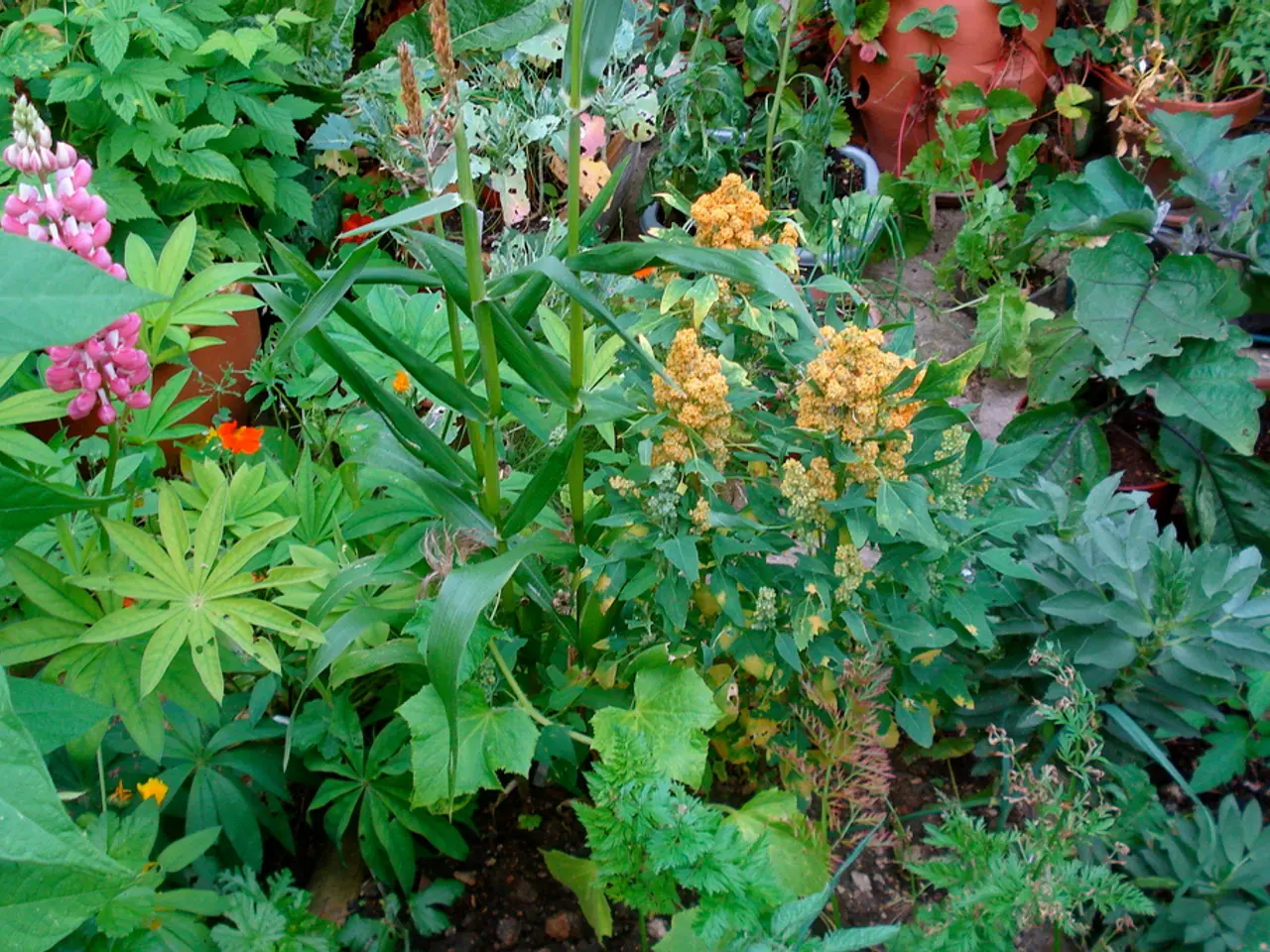Cooling a greenhouse during heatwaves and preventing plant overheating: Verified techniques
Maintaining Optimal Greenhouse Temperatures for Thriving Plants
Greenhouse gardening is a popular practice that allows for year-round plant cultivation, but ensuring the right temperature is crucial for plant health and growth. To achieve this, a combination of ventilation, heating, cooling, shading, and precise climate control systems is essential.
Ventilation plays a vital role in temperature regulation and air exchange. Opening vents or windows early in the morning and in the evening when outdoor temperatures are lower helps let hot air escape and fresh air enter, reducing heat buildup. Mechanical ventilation, such as fans and air circulators, ensures consistent airflow and uniform temperature, preventing hot spots and reducing humidity-related disease risks.
Cooling methods are essential during hot periods. Shade cloths or screens can be used to reduce solar heat gain, while evaporative cooling systems or cooling fans can lower temperatures quickly and maintain a cooler environment, particularly beneficial for heat-sensitive plants like mushrooms or cannabis.
Heating is important in colder climates or seasons. Gas or electric heaters can maintain minimum temperatures conducive to growth. Thermal storage tanks can release heat slowly overnight for stability. Calibration of thermostats and sensors is crucial to prevent overshoot or energy waste.
Automated climate control systems are common in modern greenhouses. Smart sensors, IoT, and AI monitor and adjust temperature and humidity in real time with high precision. Automated vent openers and climate control units facilitate adjustments without manual intervention, allowing seasonal setpoint modifications.
Humidity management is another key aspect. Proper air circulation not only controls temperature but also reduces excessive humidity that can promote fungal growth or condensation problems. Keeping relative humidity optimal varies by plant species but generally needs constant monitoring.
Plant-specific temperature ranges are important to consider. Most plants thrive between 68°F and 78°F (20–26°C). Cannabis prefers 24–30°C (75–86°F) during vegetative growth and below 28°C (82.4°F) during flowering to avoid heat stress. Mushrooms require cooler, well-ventilated, and humidity-controlled environments to prevent overheating and ensure healthy development.
Placing vents at different heights in a greenhouse can create natural draft and improve air circulation. Some gardeners also place large containers of cold water in the greenhouse to help cool it. After each watering, the greenhouse should be aired to remove excess moisture.
Forced ventilation can be used on hot, windless days, involving the installation of fans, creation of additional windows, and use of valves to regulate airflow. The ideal vent area for a greenhouse should be at least 25% of its total area, according to Nikonoorova. Watering the paths in the greenhouse with cold water can lower the soil temperature.
In conclusion, combining ventilation (natural + mechanical), shading, heating, and cooling alongside smart digital climate control systems will optimize greenhouse temperature for various plant cultures, avoiding extremes and ensuring robust plant health and yield. Regular sensor calibration and seasonal adjustment of temperature setpoints are critical to adapt to changing environmental conditions.
The home-and-garden lifestyle of greenhouse gardening caters to year-round cultivation, and lifestyle choices include managing humidity for a healthy environment, such as promoting natural draft and air circulation by placing vents at different heights.
Proper lifestyle practices, like aiding cooling during hot periods by using shade cloths or screens, can protect heat-sensitive plants like mushrooms in the home-and-garden setting.




